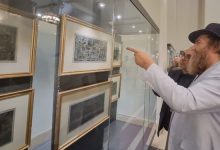How the National Stem Cell Supply Centers work in the Blood Transfusion Organization
According to Fars news agency’s health group, Abdollah Salek Moghadam, Deputy Technical and New Technologies of the Blood Transfusion Organization, stated that hematopoietic stem cell transplantation has been performed for the treatment of patients with blood malignancies, metabolic disorders and defects for more than 80 years, and added: Stem cell transplantation from a histocompatibility (HLA)-matched recipient is preferred, and the patient’s sibling is usually the first choice. In the absence of a relative donor, a non-relative donor is included in the donation list.
Salek added: About 70% of patients who need to receive hematopoietic stem cells lack suitable relatives in terms of histocompatibility antigens. For this purpose, the non-relative stem cell subscription center of the Blood Transfusion Organization subscribes non-relative donors who have a history of donating blood with the abbreviation “Spas”.
He emphasized: The centers of different countries have joined together and formed global and international groups and assemblies in order to facilitate finding a suitable donor and improve the results of transplantation from non-relatives, and they share stem cells even at the international level for the patients of the member countries. .
The vice president of technical and new technologies of the organization added: The mission of creating a data bank of hematopoietic stem cells and umbilical cord blood was assigned to the Iranian Blood Transfusion Organization by the Vice President of Technology and Research in 2006, and these two national centers did not receive the smallest amount possible. The use of hematopoietic stem cells from non-relative donors and umbilical cord blood cells have been used by patients.
The Hematopoietic Stem Cell Donor Acceptance Center (Sepas Center) was established on March 1, 2008 and started its official operation in June 2009 in the Iran Transplantation Organization, and until now, by calling donors who are ready to donate their stem cells, they have saved the lives of many patients. has saved
According to Salek Moghadam, since the first transplantation of hematopoietic stem cells, tremendous progress has been made in Iran and the world to save the lives of patients, which is due to the pioneers of this science, group cooperation and exchange of stem cells under the activity of international organizations that followed certain standards.
end of message/
You can edit this article
Suggest this article for the first page

